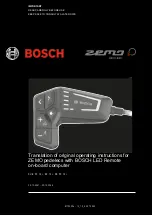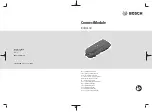
7 Check the Frame and Fork Closely examine your frame and fork, especially near junctions of
the tubing and clamping or attachment areas, for signs of fatigue stress:
• Dents
•Cracks
•Scratches
•Deformation
•Discoloration
•Unusual noises
8 Chain
The chain connects the chainring (and crankarms) to the rear wheel. On a bicycle that does not
have a rear derailleur, correct chain tension is required to prevent the chain from falling off. To
adjust the chain tension
1. Slightly loosen the rear wheel axle nut on one side of the wheel, then on the other side of the
wheel. If you fully loosen the axle nut on one side before you loosen the other axle nut, you can
cause the bearings to come out of adjustment.
2. Slide the wheel rearward to tighten the chain.
3. Complete the wheel installation before riding the bike.
MAINTENANCE
This maintenance schedule is based on normal use. If you ride your bicycle more than average;
or in rain, snow; do maintenance on your bicycle more frequently than the schedule
recommends. If a part malfunctions, check and service it immediately, or consult your dealer. If a
part has wear or damage, replace it before you ride your bicycle again.
After initial use, new bicycles should be checked. As an example, cables stretch through use, and
this can affect the operation of the shifting or brakes. Approximately two months after you
purchase your new bicycle, have your dealer fully check your bicycle.
Even if you did not ride your bicycle much, have your dealer fully service your bicycle each year.
Suggested Tools List
Not all these tools are necessary for all bicycles.
• Torque wrench with Nm gradations
• 2, 4, 5, 6, 8 mm hexagonal wrenches
• 9, 10, 15 mm open-end wrenches
• 14, 15, and 19 mm socket
• T25 Torx wrench
• No. 1 cross-head screwdriver
• Bicycle inner tube patch-kit, tyre-pump with gauge, and tyre levers
Whilst undertaking any maintenance on your bicycle, it is important to avoid sharp points,
moving parts, hot spots and pinch points. Some parts of your bicycle can injure you if
mishandled. Sharp points include the teeth of the chainrings and some pedals. Brakes and their
parts get hot. Moving parts can cut skin and even break bones. Clamps and pivoting parts such
as brake levers can pinch, as can the chain where it runs on to sprocket teeth.
F O R M E B I K E S . C O . U K
13















































